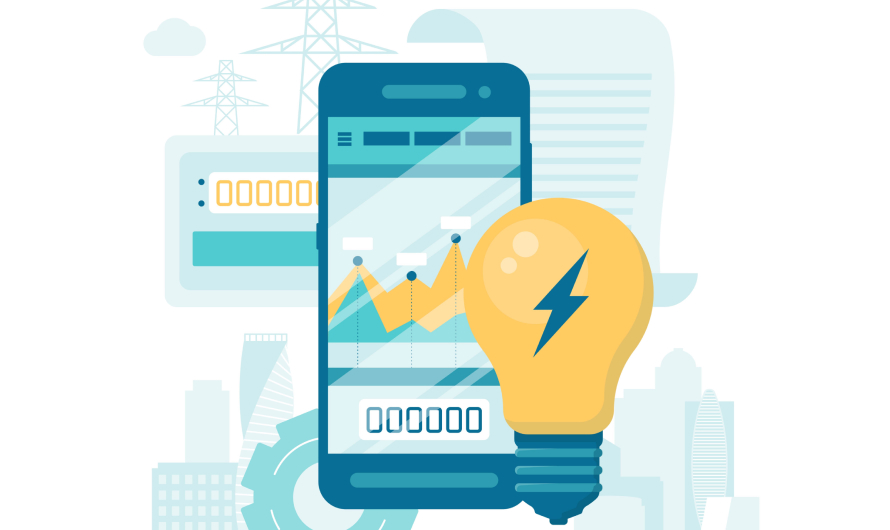Understanding and managing your electricity bill is essential for effective budgeting and energy conservation. However, the complexity of electricity bills can often make this task daunting. In this guide, we’ll simplify the process of calculating your electricity bill into easy-to-follow steps.
Electricity bills typically include key elements such as the billing period, energy consumption measured in kilowatt-hours (kWh), the rate per kWh charged by your utility provider, and additional fees or taxes. By understanding these components, you can gain insight into your energy usage patterns and make informed decisions to conserve energy and reduce costs.
Mastering the calculation process empowers you to take control of your energy expenses and budget more efficiently. Moreover, modern technologies like the Airtel Thanks app can further streamline this process. With its intuitive interface and innovative features, the app offers real-time energy usage tracking, personalised recommendations for energy conservation, and alerts to help you stay within your budget.
By leveraging technology, you can simplify the management of your electricity expenses and contribute to a more sustainable future. Let’s dive into the steps involved in calculating your electricity bill and explore how the Airtel Thanks app can assist you in this endeavour.
Steps to Calculate Electricity Bill
Step 1: Understanding Your Electricity Bill
Your electricity bill is a comprehensive document that provides details about your energy consumption and associated charges. It typically includes information such as the billing period, your total consumption measured in kilowatt-hours (kWh), the rate per kWh charged by your utility provider, and any additional fees or taxes. Understanding these components is essential for effectively managing your energy expenses. Additionally, some bills may offer insights into your energy usage patterns, such as peak hours or average consumption, which can help you identify opportunities for conservation and cost-saving measures.
Step 2: Gathering Necessary Information
Before you can calculate your electricity bill, you’ll need to gather some essential information. This includes your previous and current metre readings, usually measured in kWh. These readings represent the amount of electricity consumed during the billing period. Additionally, note down the start and end dates of the billing cycle, as this determines the duration for which you’re being charged. Finally, check your utility provider’s tariff rates to determine the cost per kWh, as this will vary depending on factors such as location and time of use.
Step 3: Calculating Energy Consumption
The first step in calculating your electricity bill is determining your energy consumption during the billing period. To do this, subtract the previous metre reading from the current reading. The result will give you the total kWh of electricity used during the billing period. For example, if your previous reading was 500 kWh and your current reading is 600 kWh, your energy consumption for the billing period would be 100 kWh.
Step 4: Determining the Cost of Electricity
Once you know your energy consumption, the next step is to calculate the cost of electricity. Multiply the total kWh by the rate per kWh provided by your utility provider. This will give you the cost of the energy consumed during the billing period. For instance, if the rate per kWh is ₹1, and your energy consumption is 100 kWh, then your energy cost would be ₹100.
Recommended: Benefits Of Utility Bill Payments On Time
Step 5: Factoring in Additional Charges
In addition to the cost of electricity, your bill may include additional charges such as service fees, taxes, or surcharges. These charges vary depending on your location and utility provider. Be sure to add these extra costs to the calculated amount to determine your total electricity bill for the billing period. These additional charges are important to consider as they can significantly impact your overall expenses and should not be overlooked when budgeting for energy costs.
Example Calculation
Let’s walk through an example calculation to illustrate the process. Suppose your previous metre reading was 500 kWh, and your current reading is 600 kWh. You can also refer to bill payment history to know that. The difference between the two readings is 100 kWh, representing your energy consumption for the billing period. If the rate per kWh is ₹1, then your energy cost would be 100 kWh * ₹1 = ₹100. If there are additional charges of ₹10, your total electricity bill would be ₹100.00 + ₹10.00 = ₹110.00.
Also Read: How to download bill payment invoice or receipts from Airtel app!
Conclusion
Understanding how to calculate your electricity bill empowers you to manage your energy usage more effectively and budget accordingly. By following the steps outlined in this guide, you can accurately determine your energy costs and identify opportunities for conservation.
Moreover, the Airtel Thanks app offers features that can enhance your energy management experience. With the app, you can track your electricity usage in real-time, set usage alerts, and receive personalised recommendations for reducing energy consumption. By leveraging the Airtel Thanks app, you can also pay postpaid bills, prepaid bills, and more.



